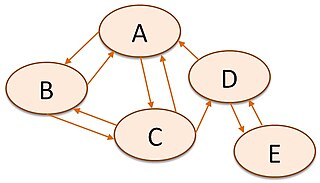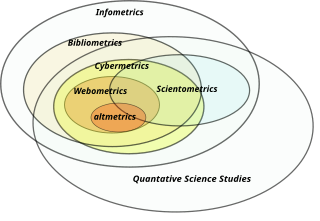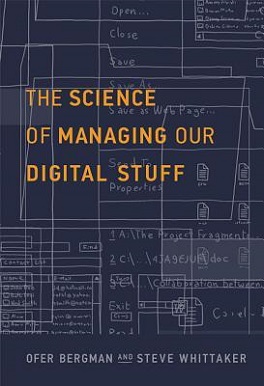A personal information manager is a type of application software that functions as a personal organizer. The acronym PIM is now, more commonly, used in reference to personal information management as a field of study. As an information management tool, a PIM tool's purpose is to facilitate the recording, tracking, and management of certain types of "personal information".
Information architecture (IA) is the structural design of shared information environments; the art and science of organizing and labelling websites, intranets, online communities and software to support usability and findability; and an emerging community of practice focused on bringing principles of design, architecture and information science to the digital landscape. Typically, it involves a model or concept of information that is used and applied to activities which require explicit details of complex information systems. These activities include library systems and database development.
Personal information management (PIM) is the study and implementation of the activities that people perform in order to acquire or create, store, organize, maintain, retrieve, and use informational items such as documents, web pages, and email messages for everyday use to complete tasks and fulfill a person's various roles ; it is information management with intrapersonal scope.

The science of webometrics tries to measure the World Wide Web to get knowledge about the number and types of hyperlinks, structure of the World Wide Web and using patterns. According to Björneborn and Ingwersen, the definition of webometrics is "the study of the quantitative aspects of the construction and use of information resources, structures and technologies on the Web drawing on bibliometric and informetric approaches." The term webometrics was first coined by Almind and Ingwersen (1997). A second definition of webometrics has also been introduced, "the study of web-based content with primarily quantitative methods for social science research goals using techniques that are not specific to one field of study", which emphasizes the development of applied methods for use in the wider social sciences. The purpose of this alternative definition was to help publicize appropriate methods outside the information-science discipline rather than to replace the original definition within information science.
Personal knowledge management (PKM) is a process of collecting information that a person uses to gather, classify, store, search, retrieve and share knowledge in their daily activities and the way in which these processes support work activities. It is a response to the idea that knowledge workers need to be responsible for their own growth and learning. It is a bottom-up approach to knowledge management (KM).

Informetrics is the study of quantitative aspects of information, it is an extension and evolution of traditional bibliometrics and scientometrics. Informetrics uses bibliometrics and scientometrics methods to study mainly the problems of literature information management and evaluation of science and technology. Informetrics is an independent discipline that uses quantitative methods from mathematics and statistics to study the process, phenomena, and law of informetrics. Informetrics has gained more attention as it is a common scientific method for academic evaluation, research hotspots in discipline, and trend analysis.
Thrownness is a concept introduced by German philosopher Martin Heidegger (1889–1976) to describe humans' individual existences as being 'thrown' (geworfen) into the world.
Faceted search augments lexical search with a faceted navigation system, allowing users to narrow results by applying filters based on a faceted classification of the items. It is a parametric search technique. A faceted classification system classifies each information element along multiple explicit dimensions, facets, enabling the classifications to be accessed and ordered in multiple ways rather than in a single, pre-determined, taxonomic order.

Alert messaging is machine-to-person communication that is important or time-sensitive. An alert may be a calendar reminder or a notification of a new message.

Karen Spärck Jones was a self-taught programmer and a pioneering British computer scientist responsible for the concept of inverse document frequency (IDF), a technology that underlies most modern search engines. She was an advocate for women in the field of computer science. She even came up with a slogan: “Computing is too important to be left to men.” In 2019, The New York Times published her belated obituary in its series Overlooked, calling her "a pioneer of computer science for work combining statistics and linguistics, and an advocate for women in the field." From 2008, to recognize her achievements in the fields of information retrieval (IR) and natural language processing (NLP), the Karen Spärck Jones Award is awarded to a new recipient with outstanding research in one or both of her fields.
Group information management (GIM) is an extension of personal information management (PIM) "as it functions in more public spheres" as a result of peoples' efforts to share and co-manage information, and has been a topic of study for researchers in PIM, human–computer interaction (HCI), and computer supported cooperative work (CSCW). People acquire, organize, maintain, retrieve and use information items to support individual needs, but these PIM activities are often embedded in group or organizational contexts and performed with sharing in mind. The act of sharing moves personal information into spheres of group activity and also creates tensions that shape what and how the information is shared. The practice and the study of GIM focuses on this interaction between personal information and group contexts.

Compendium is a computer program and social science tool that facilitates the mapping and management of ideas and arguments. The software provides a visual environment that allows people to structure and record collaboration as they discuss and work through wicked problems.
The user-subjective approach is the first interaction design approach dedicated specifically to personal information management (PIM). The approach offers design principles with which PIM systems can make systematic use of subjective attributes. The approach evolved in three stages: (a) theoretical foundations first published in a Journal of the American Society for Information Science and Technology during 2003. The paper introduces the approach and its design principles (b) evidence and implementation was published in another JASIST paper in 2008. The paper gives empirical evidence in support of the approach as well as seven novel design schemes that derives from it. It has won the Best JASIST paper award in 2009.(c) specific design evaluation this stage has already begun with evaluation of the first user-subjective design prototype called GrayArea in a Conference on Human Factors in Computing Systems paper published in 2009.
Jaime Teevan is an American computer scientist known for her research in human-computer interaction and information retrieval. She is particularly known for the work she has done on personalized search. According to the Technology Review, Teevan "is a leader in using data about people's knowledge, preferences, and habits to help them manage information."
Gary Marchionini is an American information scientist and educator at the University of North Carolina at Chapel Hill (1998-present).
Boolean differential calculus (BDC) is a subject field of Boolean algebra discussing changes of Boolean variables and Boolean functions.
Gary M. Olson, Ph.D. is a professor and researcher, specializing in the fields of human-computer interaction and computer supported cooperative work. He has published over 120 research articles and book chapters, and is one of the authors of Working Together Apart: Collaboration over the Internet.

The Science of Managing Our Digital Stuff is a book about personal information management (PIM) written by Ofer Bergman and Steve Whittaker. It was published in 2016 by MIT Press. The book examines why and how individuals organize their personal digital information, as well as how new PIM systems can make this process more efficient. It has three parts: Personal Information Management: The Curation Perspective, Hierarchical Folders and Their Alternatives, and The User-Subjective Approach to PIM Systems Design.
Michael Genesereth is an American logician and computer scientist, who is most known for his work on computational logic and applications of that work in enterprise management, computational law, and general game playing. Genesereth is professor in the Computer Science Department at Stanford University and a professor by courtesy in the Stanford Law School. His 1987 textbook on Logical Foundations of Artificial Intelligence remains one of the key references on Symbolic artificial intelligence. He is the author of the influential Game Description Language (GDL) and Knowledge Interchange Format (KIF), the latter of which led to the ISO Common Logic standard.
Meredith Ringel Morris is an American computer scientist who works in human-computer interaction and collaborative web search. She is a principal scientist at Google Brain and an affiliate professor at the University of Washington in The Paul G. Allen School of Computer Science & Engineering and in The Information School.






